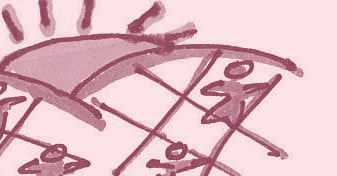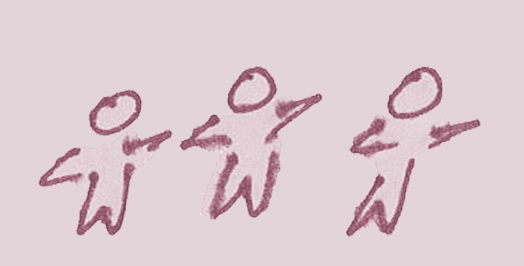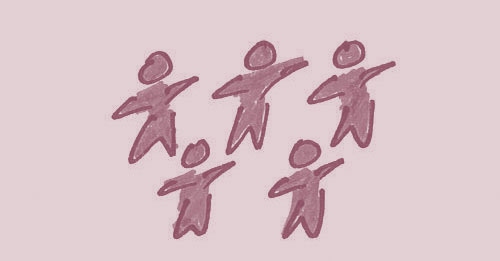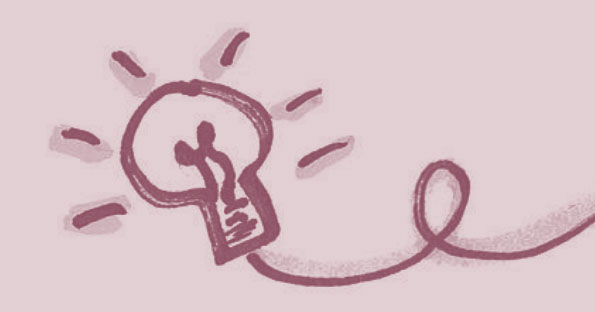How the Tamejavi Culture and Art Series Differs from the Tamejavi Festival
Inspired by the Tamejavi Festival and guided by its principles and components, we tested a different approach for the Tamejavi Culture and Arts Series (TCAS). Instead of a two-day festival held in a single place, we decided to expand the experience and move it to other spaces outside of Fresno. The intent was to take what we’d learned from organizing five Tamejavi Festivals and share it with the Tamejavi Cultural Organizing Fellowship Program (TCOFP) fellows to help them present public events that would tell a community story.
Tamejavi Culture and Art Series
For the pilot phase of the first TCAS, the cohort of TCOFP fellows produced events in their own communities that were the culmination of their fellowship programs. We hosted nine different events over a four-month period. TCAS provides a cultural and artistic space for fellows to tell the stories of their community assessment findings. It offers a stage for local artists to shed light on their cultural assets and the diverse cultural richness immigrants are contributing to their new place. By organizing these events, fellows had the opportunity to practice what they learned and to build partnerships to support their project with local universities, schools, community colleges, small businesses, chambers of commerce, city councils, county boards, arts councils, and arts and cultural organizations. Fellows attended each other’s public presentations and participated in a post reflection event to critique and evaluate their projects.
Example of a Tamejavi Cultural and Art Series, 2015
Spoken Narratives: Journeys of Resilience
Cambodian Daily Lifestyle by Sokha Serey
This presentation depicted events that took place in Cambodia during residents’ daily lives. Its purpose was to help the next generation of Fresno Cambodian Americans and the general public understand Cambodia’s culture. Cambodian culture and civilization were lost during a period of war and political change; nevertheless, there is a renaissance of Khmer culture slowly blooming inside Cambodia and beyond. Inspired by Tamejavi, this group saw an opportunity to re-establish Cambodian culture in American society and throughout Khmer American communities. It was their hope that the community would remember the events that shaped Cambodian history, and that the result would be a strengthening and unification of communities. They wanted this event to inspire immigrants to value education, culture and the arts, and to work together toward building vibrant, diverse cultures in America.
Ashamed No More
Mixtecos from Copanatoyac, Guerrero, Mexico imparted the value of celebrating and acknowledging their cultural traditions and heritage for building a sense of place and belonging in a new country. During this one-of-a-kind day, Mixteca women from the unincorporated town of Tonyville shared their culinary knowledge and their efforts to preserve the authentic flavors of the mountain region of Guerrero, Mexico. Women prepared, exhibited and served a variety of traditional dishes like mole, pozole and memelas using distinct Mexican native ingredients like chile, frijol, corn, epazote and more. Ashamed No More resembled the indigenous tianguis, or outdoor market – the public space where people gather to tell stories, discuss public matters, display their crafts and artistic talents, and where children play and learn their cultural past and present. The streets of Tonyville were decorated with papel picado and filled with the traditional musical tones of chilenas. This event provided a safe, intimate environment where immigrant Mixtecos from Copanatoyac, Guerrero could display their cultural traditions.


Principles
• People work collectively (in groups), share experiences, and encourage participation
• Provide a safe and welcoming learning space

Tips
• Crafting a community story into an event is not an easy task. It can be done, but requires a lot of work.
• Theater is an excellent way to tell a story
• Organizing this type of event requires resources

References
• The Theory Behind Our Work booklet
• Popular Education Section How to Make it Work I
• Glossary
• TCOFP Section
• TCAS Section
Guidelines & Parameters for Crafting Community Issues into Public Stories
This tool helps establish criteria for crafting a public story, as well as parameters to consider for hosting a public presentation.
To guide the fellows in crafting a public story that conveys community issues that inspire and call for action, we established the following criteria:
• The stories should be presented in public as a culture and arts event or community dialogue.
• The story has to connect and communicate a community concern that fellows learned while doing their community assessment and cultural inventory.
• There has to be clarity in the art form in which the story is presented to the public.
• The public presentation, planning and organizing of the story is expected to provide opportunities for community engagement.
• The public presentation of the story provides opportunities for inspiring fellows’ community creativity.
• The production of the public presentation is to be original and add to the fellows’ community cultural and artistic existing inventory.
• The story should inspire community action and continuation of organizing.
• The story has a clear public educational intention aimed at their own community, as well as the general public.
• A public story includes three elements: a story of self, a story of us, a story of now.
Parameters for Public Presentation of Stories
Indoor events – The actual presentation should last a minimum of 60 minutes; 80 might be considered in the case of a high-quality event
All program events should include time for: telling the story of TCOFP, TCOFP photo exhibit, Telling Community Stories Exhibit (results of community assessment), post-event dialogue and reception
Outdoor events – Outdoor events can last up to six hours, including time for telling the story of TCOFP, TCOFP photo exhibit, Telling Community Stories Exhibit (results of community assessment), post-event dialogue and reception
Other – Budget should be allocated in accordance with the level to which the story meets the criteria.
Fellows, their learning groups and cultural and artistic teams should have a clear understanding of the commitment and time required for the planning and organizing of the public presentation.
Fellows and learning groups should have a clear understanding of the role of all involved in the organizing of TCAS, including fellows, learning group members, PVI staff, TCOFP coordinating group, artistic mentors, artists, cultural holders, etc.
The presentation of the public stories is a collaborative collective effort; therefore, fellows and learning groups are expected to be open to suggestions and negotiation from and with all parties involved.


Principles
• Increasing access to public space for cultural expression is key

Tips
• Consider weather when planning an outdoor event
• Check-in with people weeks in advance about venues and technical needs

References
• “Three Elements
of a Public Story” Tool
• Telling Your Public Story:Self, Us, Now by Marshall Ganz
• The Theory Behind Our Work booklet
• Popular Education Section How to Make it Work I
• Glossary
• TCOFP Section
• TCAS Section
Elements of a Public Story: A Story of Self,
A Story of Us and A Story of Now
This tool is inspired by the worksheet, “TELLING YOUR PUBLIC STORY: Self, Us, Now” by Marshall Ganz. We found the worksheet useful when working with TCOFP fellows in the development of their public stories.
A pubic story includes three elements:
1. A story of self: why you were called to what you have been called to
2. A story of us: why your constituency, community, organization has been called to its shared purposes, goals, vision
3. A story of now: the challenge this community now faces, the choices it must make, and the hope to which “we” can aspire
Example:
“Ashamed No More” or “Preserving My Culture” by Genoveva Vivar
The Story:
A STORY OF SELF:
I immigrated to the U.S. with my mom, brothers and sister at the age of 7. I don’t want to lose my heritage nor forget where I come from. I want the world to know how valuable and important my culture and the traditions are.
A STORY OF US:
Explain how my community has changed its tradition after immigrating to the U.S.
A STORY OF NOW:
How is losing our traditional cooking skills affecting us and how can we prevent it from happening? A first step in doing this was to demonstrate the variety of traditional cooking styles in my community.
“I believe that women are the cultural holders of my community. While doing my community assessment, I came to realize that if women are given the opportunity and space to share issues they relate to, they are more than willing to express themselves…because the majority of them don’t usually talk.
They were clearly excited to have the opportunity to communicate about their crafting and cooking skills in their own language and welcomed the chance to share with each other what they know.”
Genoveva Vivar


Principles
• When combined, cultural exchange and community organizing increase the impact of local efforts to improve Valley communities and strengthen organizing networks

Tips
• It was good talking to fellows since the beginning about a “story” rather than an event
• It is not easy to transform ideas into practice

References
• The Theory Behind Our Work booklet
• Glossary
• Popular Education Section How to Make it Work I
• TCOFP Section
• TCAS Section
Artists in Residency Program
Through our Artist in Residency program, we were able to bring professional artists to the Valley from other parts of the country and world. The idea was for the artists to spend time in the community and lead a workshop on their discipline. Designed for immigrant artists, poets and filmmakers, the workshops sought to engage the public with diverse artists.
Featured Artists in Residency
Born in Buenos Aires, Argentina, Ernesto Torchia identifies himself as a man of theater. He has a solid reputation as an actor, director and professor of theater and film. He worked with the Zapoteco youth in developing the Fandango Zapoteco play in 2013. He was very much imbedded with the community as he spent a few days a week rehearsing and enhancing their skills as actors. He also provided advice to the Cambodian group who was working on waving dances and skits as part of the Legacy of Angkor. Additionaly, he supported the Pan Valley Institute in the development of our 2013 Grand Finale.
Marta Toledo is a Zapotec singer from Istmo de Tehuantepec, Oaxaca. Her visit happened to be scheduled right after the earthquake in Mexico in September 2017 so upon her arrival, she met with the community to share her firsthand experiences. She also made a visit to the fields in Madera, Calif. to bring music to the farmworkers.
Maestro Fausto Sandoval Cruz took part in a few presentations offering an overview of Mexico’s indigenous people, focusing on the origins of the Triqui people as registered through their oral traditions and historic documents. He discussed their social and political structure and the challenges the Triquis face in keeping their history, culture and language alive. While on his visit, he also met with the local Triqui community who welcomed him and shared about their lives in the United States. Members of the Triqui community shared their concerns about the generation gap that is causing loss of language and tradition among younger generations.
Adam Bowser who is a New Jersey native also known as ShadoKat, has exploded upon the spoken word scene, rousing audiences across the United States and Europe in a number of notable venues. Using hip-hop influenced style and cynical humor, his passionate messages don’t shy away from various topics that speak to social awareness.
He held an oral tradition workshop with the following objectives:
• Explore ways of bringing the value of oral tradition to the front of the spoken word arts
• Reflect on the connection of oral tradition with contemporary art
• Find ways of validating poetry within community
• Bring local poets and spoken word artists to build poetry, oral tradition and spoken word experiences
• Meet with spoken word artists and oral tradition masters to discuss ways of supporting and emphasizing tradition rather than adapting tradition to fit into contemporary expression and media
“Tamejavi has been the only event in the Valley that has provided value to immigrant artists and that has redefined art. This definition of art has demonstrated that there are many types of art; not only what many consider “high end” art, an area where immigrant artist are often excluded.”
Myrna Martinez Nateras


Principles
• Not teaching but allowing participants to discover what they know
• Tamejavi incorporates learning from experienced artists, presenters and cultural workers and believes that participating groups have the capacity to make decisions about the direction and presentation of their work

Tips
• Invited artists are here to share their craft and support local artists in enhancing their skills
• Artists in residence have to be from communities we work with and be willing to be embedded in the community
• Invite artists that are willing to transfer their knowledge

References
• The Theory Behind Our Work booklet
• Glossary
• Popular Education Section How to Make it Work I
• TCOFP Section
• TCAS Section
The Importance of an Event Planning Document
The event planning document exists to have all components of organizing an event in one single document. It’s a “living document” in that it is constantly changing as the event planning process evolves.
Components of an Event Planning Document
Title: What will you name your event? What will the tittle communicate?
Goal: What are you trying to change by holding this event?
Objective: What are the objectives you are trying to accomplish with this event?Date: When will the event will take place?
Possible Venues: Possible venues for hosting your event
Suggested Activities: What activities will the event program include?
Program: A run-down of how the event will flow from beginning to end
Planning Committee: Who else will be working with you in organizing this event? Who else should you invite to be part of the organizing committee?
Sponsors: Who can you ask to support your efforts by sponsoring the event?
Promotion/Outreach: How are you going to invite people? What materials will you need to promote the event?
Budget: Whether working with a large or small budget, it is important to allocate funds to things you will need to pay for such as food, a venue, childcare, decorations, etc.
Logistics: What will you need in terms of logistics? i.e. sound system, microphones, etc.
Human Resources: This category includes people that will lend their expertise to your event; i.e. a technical manager, interpreters, note takers, volunteers
Timeline: The schedule of when things need to be in place
Tasks: Assignments for all people involved in the planning, including deadlines
Example of Planning Document
TCOFP
Event Planning Document
-
Title
-
Goal
-
Objectives
-
Dates
-
Possible Venues
-
Suggested Activities


Principles
• Working with individuals interested in collective learning, engaging others and forming groups of people

Tips
• The event planning document should be the first document you turn to when you have an upcoming event
• Establishing a date for an event is challenging because there are many things to consider; i.e. are there other events happening the same day, what venues are available, when are people available?

References
• Event Planning Tool
• The Theory Behind Our Work booklet
• Glossary
• TCOFP Section
• TCAS Section
• Tamejavi Festival Section
Evaluation Approaches: Tamejavi Cultural Organizing Fellowship Program (TCOFP) Alumni Interview
In this tool, we share an example of an evaluation we did with the alumni that took part of the first cohort of the Tamejavi Cultural Organizing Fellowship Program (TCOFP).
We reached out to fellowship alumni to see whether or not they remained involved in cultural organizing and how their time in the TCOFP influenced their lives and the lives of those in their community. The purpose was to allow us to measure the individual and community effects of the program upon its completion and to allow us to plan for future TCFOPs.
To gather the information, we contracted a consultant to conduct one-on-one interviews. The consultant contacted each participant for an interview that centered around three main themes: 1) Discuss how you are sustaining your cultural organizing work; 2) Discuss the specific supports systems that are required and available for you to sustain your work including access to networks and resources, space and development of cultural organizing skills; 3) Discuss any other comments you have regarding your TCOFP experience.
Cultural Organizing Questions:
• Have you continued cultural organizing work since the completion of TCOFP?
• What key issues are you addressing through your cultural organizing work?
• What are the key rewards/benefits of your continued cultural organizing work?
• What are the key challenges in sustaining cultural organizing work?
Cultural Organizing Key Findings
All seven of the consulted alumni continued to participate either directly or indirectly in cultural organizing work which benefits their immigrant communities.
Several alumni continued to be involved with their learning communities as mentors and advisors during cultural events within their immigrant communities. These are often tied to annual holidays and religious events, contributing to cultural offerings being maintained, and the cultural organizing skills and capacity of learning group participants being increased.
These alumni indicated that the skills, tools and cultural organizing experience gained through the fellowship provided them with the confidence to propose and undertake activities within their work setting which provided an opportunity to increase cross cultural understanding.
Supports Systems Questions:
• What networks (formal or informal) are you involved with which support your work? For example, do you maintain contact with other TCOFP alumni?
• What resources are available to support your continued cultural organizing work? (financial, in-kind, organizational, community)
• What resources are needed for continued organizing work?
• Do you have access to space for cultural organizing work?
• How are you developing your cultural organizing leadership capacity and leadership capacity within your community?
• What types of cultural organizing tools are you continuing to use? Story circles? Cultural sharings? Learning Groups? Community Assessments? Cultural inventories? Other?
Support Systems Key Findings
Networks: Alumni developed a broad network of organizations and community stakeholders and resources that they are able to draw upon for their work. These networks include universities, social service and immigrant service agencies, K-12 school representatives, chambers of commerce, radio stations, foreign consulates, immigrant community leadership groups, cultural organizations and museums, community stakeholders and leaders, churches, temples, as well as community-based small businesses.
Space: Access to space was not noted as a key issue among alumni consulted during this outreach effort. It appeared that communities were able to continue to rely on venues that were identified through the earlier fellowships (community centers, parks, church halls). One alumni noted that access to space would be more of an issue if an event grew in size and required a larger venue with added costs.
Leadership Development: One alumni accessed outside leadership development training; however, none of the other alumni sought further cultural organizing or leadership development training. This is likely a testament to the in-depth and comprehensive training received during the TCOFP fellowship. Several alumni used the skills gained from the fellowship to continue their community cultural organizing work, to mentor emerging leaders and to forge new community partnerships.
Other Key Findings
Findings from this TCOFP alumni outreach pointed to the following future planning recommendations:
• Continue outreach efforts to alumni. While this initial outreach was not able to connect to all alumni, it nevertheless provided important insight into the continued cultural organizing work undertaken by alumni and offered valuable information for future fellowship planning. PVI may consider organizing an annual family friendly retreat to periodically connect with alumni. The retreat can be organized to also provide professional development opportunities for alumni.
• Consider developing a “Next Level” shorter-term TCFOP fellowship focused on sustaining and broadening partnerships and networks created through the first round of TCOFP alumni. This is already occurring as part of the existing longer term TCFOP as three of second year TCFOP fellows are emerging from the same communities and continuing work of the first-year alumni.
• Consider developing a fellowship or an educational program geared specifically to professionals within educational, social and health organizations that serve immigrant communities. TCFOP fellowship would formalize some of the networks and partnerships created by previous alumni.


Principles
• The process has different closing points

Tips
• It’s important to learn about the long-term impacts of an event or program once it’s completed

References
• The Theory Behind Our Work booklet
• Glossary
• TCOFP Section
Evaluation Approaches: Tamejavi Festival Post-Reflection
Pan Valley Institute takes steps to measure the successes and challenges of each program or project that we undertake using an evaluation process. This tool shares some examples of how we evaluated one of our largest events.
Staff Evaluations
At the midpoint and conclusion of a program or project, Pan Valley Institute staff gather to address what worked, what didn’t, what was missing, what should be done differently the next time, lessons learned, and next steps. Participants are taken through the same process, and one-on-one interviews are conducted as needed.
EXAMPLE
Evaluation/reflection process used following the second Tamejavi Festival
Purpose:
• Reflect on and debrief after the 2004 Tamejavi Festival with the learning group about their activities and experiences
• Bring cultural organizers together to share their experiences
• Collectively discuss what it means to them to be “cultural organizers”
• Share resources, skills and learning with one another to help strengthen future work
• Begin the process of documenting and analyzing what it takes to do community organizing and popular education work using arts and culture in order to share learning with artists, organizers and interested community members and supporters
Goals:
• Collect information on the Tamejavi project to help determine future direction
• Define the roles and key factors in organizing through culture and the arts
• Start to define the necessary skills and abilities to be a cultural organizer
• Collect information that will allow us to build on our current knowledge base and popular education practices that we can implement moving forward
Post-event Reflection Questions
1. What worked and what didn’t?
2. What would you do differently? What did you personally learn or take from participating in the festival?
3. What do you think others in your community learned or took away from this event?
4. What kinds of issues were raised for you while attending the various performances and activities at the festival?
5. What kind of future relationships, work or action should result from this festival?
6. How would you describe your own personal experience with the three-day event?
7. Did the event and all the work leading up to it change anything for you, for participants, or for Fresno and the Valley in general?
Dialogue with the Cultural Organizer: Consider starting with a general check-in about how they felt about their role in facilitating the learning groups and the build-up to the festival. Possible questions could include:
1. How do we take our work to the next level to engage and include more people, deepen the inquiry, and, in some cases, move from learning to action and from intimate program work to public dialogue and problem solving? This could be general, open dialogue or it could take place through some sort of creative activity.
2. Cultural Organizing Skills, Resources and Support Systems: If we come to some understanding about what this work is and why it’s important, we can take some time to start to develop an inventory of the skills, resources and supports necessary to do the work. This conversation might also include:
• Types of partnerships, relationships, leadership, vision, and individual and group support that are necessary for success
• How to bring more people together across the lines that often divide artists and organizers, youth and adults, community members and academics, etc.
• Skills required to do the work
• Public spaces where the work can be shared with broader audiences and participants


Principles
• Offer feedback about the process once projects are complete
• The process has different closing points
• Look back at the process to see what was learned and plan for next steps
• Consider closing one cycle and beginning a new one

Tips
• Do the evaluation as soon as possible after the conclusion of a program, event or project

References
• The Theory Behind Our Work booklet
• Glossary
• Popular Education Section How to Make it Work I
Evaluation Approaches: What Did We Learn?
The Pan Valley Institute has always believed in the importance of having checkpoints in place for either implementing a project or coming together with a group of people to collaborate on reaching a specific goal. It’s a process we use whether we’re implementing a cultural organizing fellowship program, collaborating with a Human Rights Coalition to organize an annual event, or joining a coalition to advocate for immigration reform. We also evaluate and reflect at the conclusion of events like the Tamejavi Festival to collaborate on what we learned and determine next steps. In this tool, we share our philosophy of the evaluation process.
We see evaluation as an opportunity to stop and reflect on what are we doing well and what should be changed or improved so we can make the appropriate adjustments. The most important outcome of an evaluation is the gathering of lessons learned and the practical application of those lessons as it allows us to continue growing as an organization and avoid stagnation.
Evaluation is important because it provides an idea of the impact something has. When we talk of evaluation, most think of whether or not something was successful, but don’t necessarily look into why something succeeded or failed. Therefore, there are some things to keep in mind about evaluation; i.e. What is the impact you are evaluating? What are you measuring? For example, are you measuring what you achieved politically with a referendum, or do you measure the consciousness-building and engagement that have been developed? Do you measure the social changes occurring because of your work? It is just about measuring?
Challenge: One of the challenges of this process is that the non-profit system has its own way of evaluating how the community measures success. Traditional evaluation may be effective in satisfying your donors, but it may not help you determine what you are doing right or wrong, what should be changed, and what to eliminate.
Evaluation has to be participatory: The traditional evaluation for donors is shifting toward participatory evaluation, rather than whether the objectives or goals were accomplished. They are taking a more methodological approach toward evaluation; that is, what works or doesn’t work and why.
Evaluation is not about highlighting failures, but rather the learning that has taken place. In order to be effective, evaluation has to be done internally by those personally involved, and not by outsiders. This is the only way for groups to measure what learning has taken place.
It is vital for groups or organizations to strategize and have a working evaluation plan in place from the beginning. Additionally, create a competency of spaces from where people can repeatedly come together, learn and discuss what they are doing. It may be helpful to think of it as interpretation rather than evaluation.
Finally, how do we assess our own transformation? A man back in the old south who could not vote (gross evaluation) now has a son that can vote. Something happened over a period of time that allowed the son to vote. Evaluation should be thought of in this context: Where are the people now? Are the people less mobilized? Losing the battle might be seen as a failure, but the experience itself of being organized, receiving a political education and influencing political ideas that could last forever is the impact we ought to be interested in.


Principles
• Popular education is a conciseness- building process that implies learning, knowledge, development for action, reflection about the process, and planning for next steps.

Tips
• Don’t be resistant to admit that some approaches might not work. If something isn’t working, stop doing it and be creative about what can be done instead.

References
• The Theory Behind Our Work booklet
• The Glossary
• How to Make it Work I
